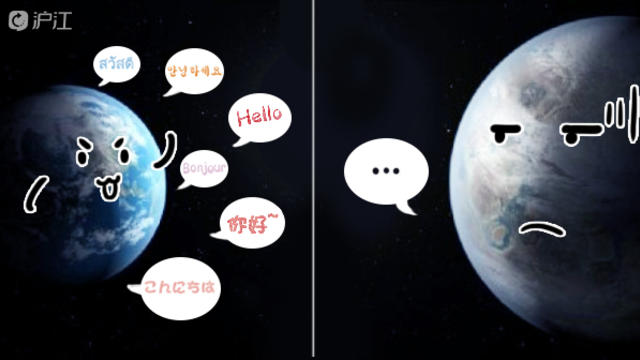四级六级阅读练习(38):孕妇暴露于受污染空气将增加孩子发胖几率
小编寄语:熟悉四六级阅读理解题型的同学应该都了解,英语四六级考试阅读理解材料大多选自《时代》《卫报》《今日美国》等外刊。要想阅读理解这部分拿到高分,必须在平常多阅读,掌握新词汇,锻炼阅读速度。但对于很多同学来说,如何每日在浩瀚的互联网世界寻找合适的阅读材料进行分析解读是一项很耗时间的事情。为此,沪江英语每日精选《卫报》《时代》等外刊上的文章供大家进行阅读练习。
【今日阅读推荐】本篇阅读材料“孕妇暴露于受污染空气将增加孩子发胖几率”选自《时代》(原文标题:Exposure to Air Pollution in Pregnancy May Boost Chances of Obesity in Kids 2012.4.17)。如果大家觉得比较简单,就当作泛读材料了解了解,认识几个新单词或新表达方式也不错。如果大家觉得这些材料理解上有难度,不妨当做挑战自己的拔高训练,希望大家都有进步^^
It’s easy to blame parents when young children gain too much weight, but the latest research suggests that certain obesity risk factors are out of Mom and Dad’s control.
In a study published this week in the American Journal of Epidemiology, scientists at the Mailman School of Public Health at Columbia University found that exposure to air pollution during pregnancy may be associated with a greater chance of having heavier kids.
Andrew Rundle, an associate professor of epidemiology, decided to study air pollution because he was curious about the role that environmental chemicals known as endocrine disruptors — compounds that include BPA, phthalates and parabens — play in determining weight. Endocrine disruptors, which mimic naturally occurring hormones like estrogen in the body and interfere with some developmental and metabolic functions, are also found in air pollution; animal studies have shown that mice exposed to estrogen-like compounds in air pollution gain more weight than unexposed mice.
Rundle and his colleagues set about tracking air pollution exposure in 702 women in their third trimester of pregnancy, by equipping them with air monitors tucked into backpacks. The women wore the backpacks for 48 hours, except while sleeping or showering, measuring levels of polycyclic aromatic hydrocarbons (PAHs), endocrine-disrupting chemicals found in cigarette smoke and car exhaust. The women, who were recruited from the university hospital’s New York City clinics, lived in the neighboring area, including the Bronx and northern Manhattan — areas that have heavy car traffic but are not known to have unusual amounts of industry-related pollution.
Children born to mothers with the highest PAH levels during their third trimester had a 79% greater risk of becoming obese, compared with children born to moms with the lowest PAH levels. By age 7, the risk was even higher — more than 2.25 times greater.
Previous studies have linked air pollution to increased risk of heart disease and stroke, and Rundle’s colleagues have shown that PAH exposure during pregnancy can also increase the risk of behavioral problems in children by age 5 and 7, but this is the first study to link the pollutant to obesity.
“It’s a fairly big effect,” says Rundle. “Obesity is really, really complicated, and there are different things pushing us in the wrong direction in terms of energy consumption and physical activity. I think we have to embrace the idea that the obesity epidemic is not just about you and me making personal choices that are not good for us, or moms making bad choices for kids. It’s a far more complicated problem than that, and environmental chemicals may play a role as one piece of the problem.”
Not all of the children whose moms were exposed to the higher levels of PAH became obese, but a significant proportion of them did, and the connection between PAH exposure and obesity remained strong even after Rundle’s team adjusted for other factors that could influencing factors, including the mother’s socioeconomic status, her income, and the median household income of the neighborhood in which the mothers lived. “We went through a long list trying to imagine all the reasons that could bias the relationship or explain it away,” says Rundle. “And after months and months of healthy skepticism, we came to the point of realizing that the data looked really solid.”
To ensure that the obese children’s excess weight was due to fat, not added bone or muscle, the researchers measured body fat composition in a subset of 453 children; they found that fat almost exclusively accounted for the children’s heavier weight. That corresponded to animal studies as well, and could hint at how the PAHs are contributing to obesity — by disrupting how fat cells are formed and develop during childhood. Normally, most of the fat cells adults have are generated during the first year of life, beginning in utero; weight gain results when these existing fat cells swell in size, not in number. But exposure to potential endocrine disruptors like PAHs could interfere with the normal development of fat cells in infancy, and lead to an increase in fat cells from an early age.
It’s hard to avoid air pollution, particularly for expectant mothers living in densely populated cities. But it is possible to avoid the worst sources of PAH exposure, such as cigarette smoke. Avoiding smoking while pregnant and asking friends and family to refrain from lighting up can help, but Rundle says it’s time that more ubiquitous sources of air pollution also be recognized by public health experts and mothers as potentially long-term health hazards. Although Rundle’s study did not examine whether a child’s exposure to PAHs in his first five years of life could have been the driver of obesity rather than the mother’s prenatal exposure, the findings still provide hard-to-ignore evidence that breathing in polluted air could have health effects that may last a lifetime.
【重点单词及短语】
be associated with 与……有关
be curious about 对……好奇的
endocrine disruptors 环境激素
interfere with 干扰,干涉;妨碍;触动或弄坏;乱动;与……抵触
set about 着手;开始做
tuck into 藏进
polycyclic aromatic hydrocarbons (PAHs) 【化】多环芳香烃,分子中含有两个或两个以上苯环结构的化合物,是最早被认识的化学致癌物。
explain sth. away 为某事搪塞;把……解释过去
account for 对…负有责任;对……做出解释;说明……的原因
correspond to 符合;相当于
hint at 暗示;对……暗示
health hazards 健康危害
Question time:
1. What kinds of research did people do up to now according to the introduction in the passage?
2. How to avoid the worst sources of PAH exposure?











